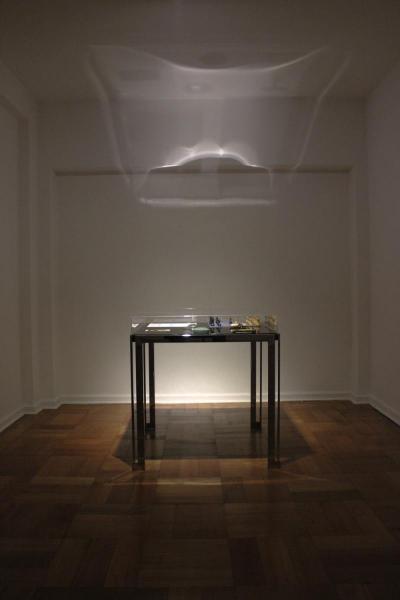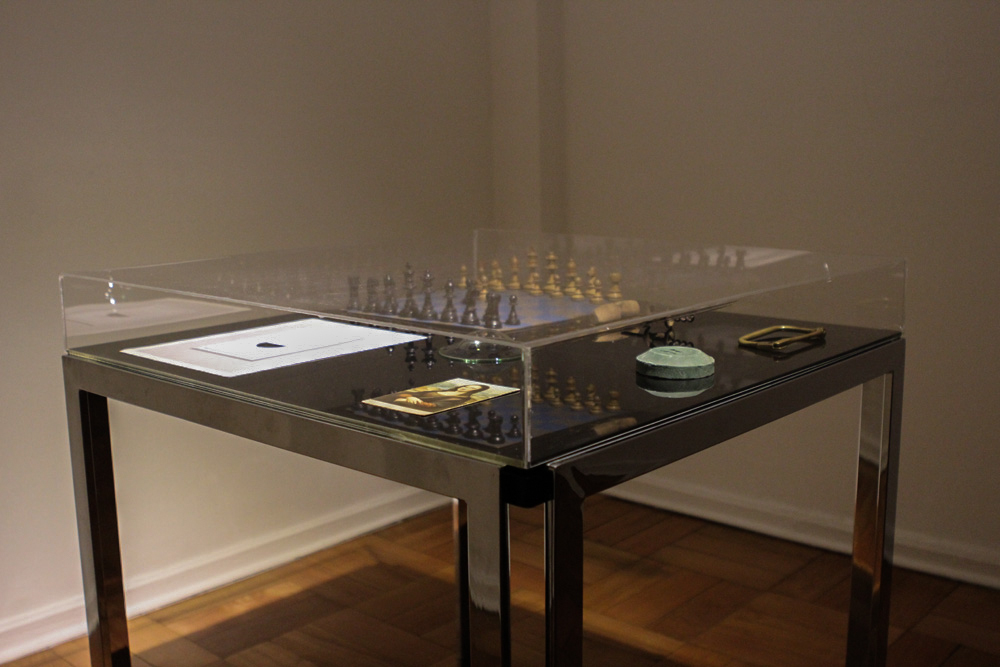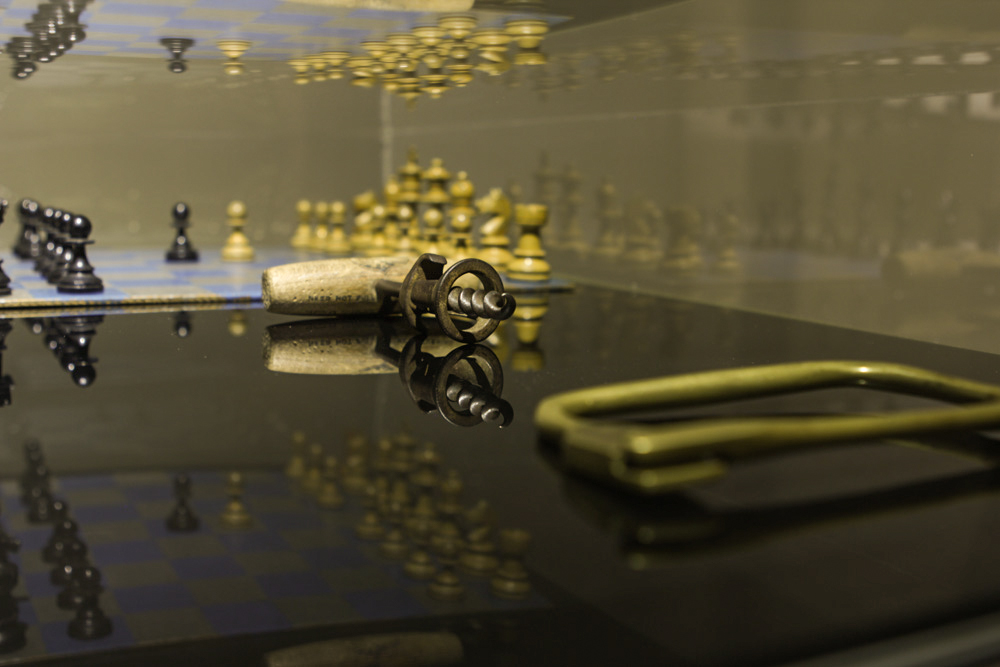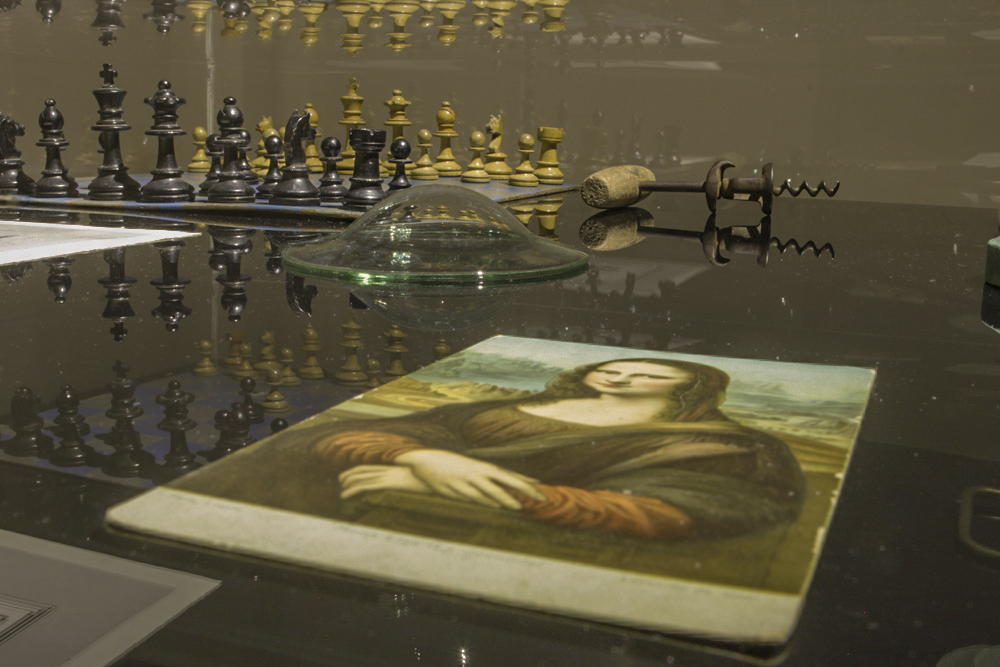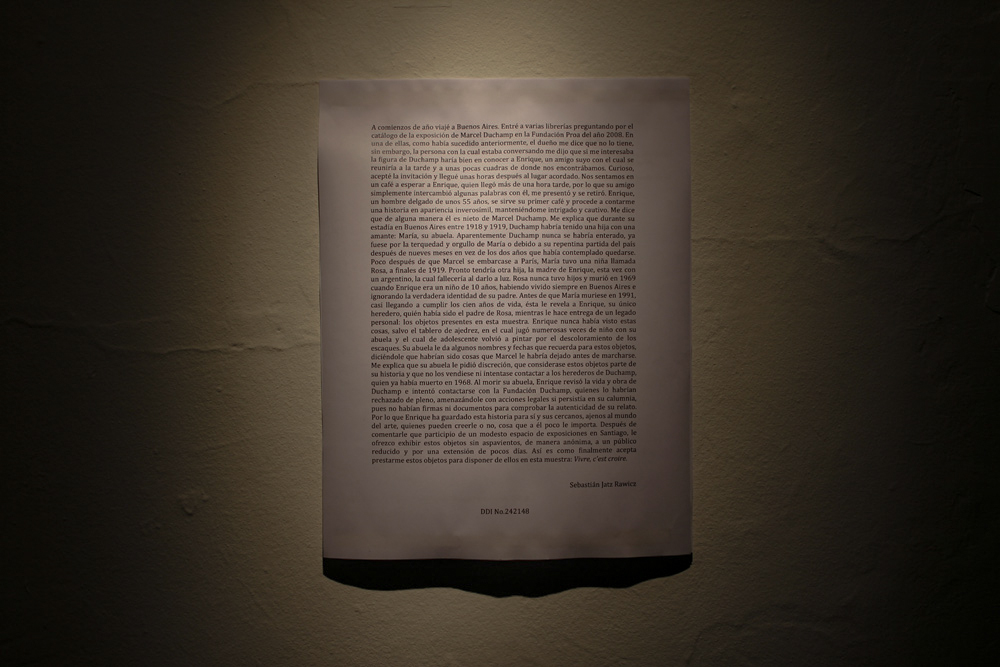Vivre c'est croire
Art exhibition on June 14, 15 and 16, 2014 at Mosqueto 464 J, Santiago, Chile within Ejercicios Mosqueto's First Curatorial Cycle.
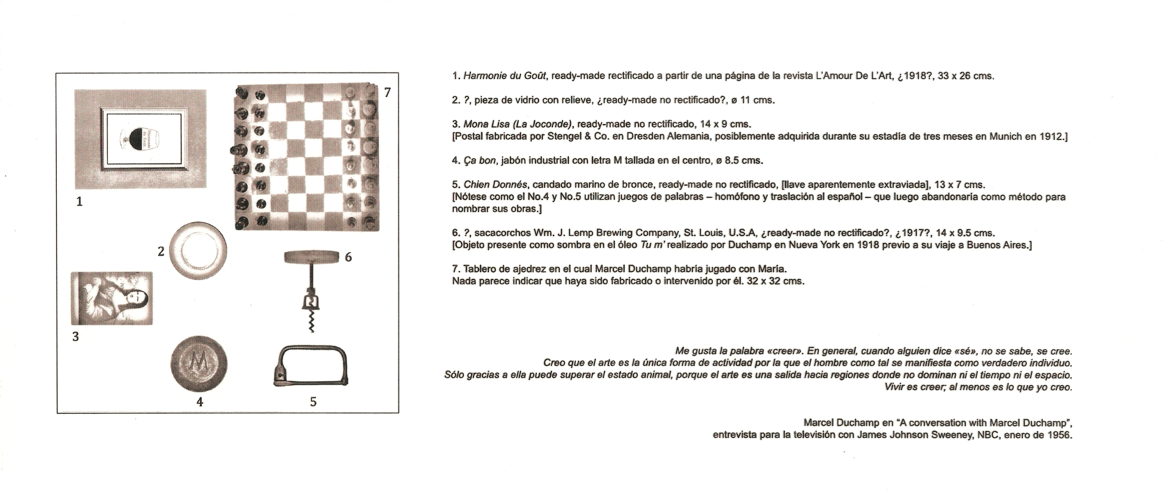
Earlier this year I traveled to Buenos Aires. I went to several bookstores asking for the catalog of the Marcel Duchamp exhibition at the Proa Foundation in 2008. In one of these bookstores, as had happened previously, the owner told me he didn’t have it, but the man who was talking with him told me that if I was interested in the figure of Duchamp I would do well in meeting Enrique, a friend of his with whom he would meet in the afternoon only a few blocks away from where we were. Curious, I accepted the invitation and arrived a few hours later at the agreed spot. We sat in a cafe waiting for Enrique, who arrived over an hour late, so they just exchanged a few words, I was introduced and then left alone with him. Enrique, a tall man around fifty something, has his first coffee and proceeds to tell me an apparently implausible story, keeping me intrigued and attentive. He tells me that somehow he is the grandson of Marcel Duchamp. He explains that during his stay in Buenos Aires between 1918 and 1919, Duchamp would have had a daughter with a mistress called Maria, his grandmother. Apparently Duchamp never would have known, whether due to Maria’s stubbornness and pride or to his sudden departure from the country after nine months instead of the two years he had contemplated staying. Shortly after Marcel embarked towards Paris, Maria had a little girl named Rosa, in late 1919. Soon she had another daughter, Enrique’s mother, this time with an Argentine, which passed away at birth. Rosa never had children and died in 1969 when Enrique was a 10 year-old boy, having always lived in Buenos Aires and ignoring the true identity of her father. Before Maria died in 1991, almost becoming a hundred years-old, she revealed to Enrique, her only heir, who was Rosas’s father, while giving him a very personal legacy: the objects present at this exhibition. Enrique had never seen these things, except the chessboard, in which he played many times as a child with his grandmother and which as a teen he repainted due to the fading squares. His grandmother gave him some names and dates that she remembered for these objects, saying these were things that Marcel would have left behind before leaving. He explained to me that his grandmother asked discretion from him, considering these objects as part of his history and not trying to sell or contact Duchamp’s heirs, he himself having died in 1968. Upon the death of his grandmother, Enrique reviewed Duchamp’s life and work and tried to contact the Foundation Duchamp, who completely rejected him, threatening with legal action if he persisted in his slander, as there were no signatures or documents to prove the authenticity of his story. Thus, Enrique has saved this story for himself and his close friends, all outside of the art world, who can believe him or not, little does he care. After telling him that I take part in a modest exhibition space in Santiago, I offer him to exhibit these objects without much fuss, anonymously, to a small audience and for a brief period of time. He finally agreed to lend me these objects in order to produce this exhibition: Vivre, c’est croire.
